
The present ABSOR chapter deals with the “absolute origin” of spouses, i.e. the geographic origin of spouses (e.g. brides) without taking into account the origin of the other spouse (e.g. the groom). The focus is on the distance (always measured “as the crow flies”) between the registry office (Standesamt) and the place of origin of the spouses. The twin chapter RELOR on the “relative origin” of spouses will give a closer look at the distance between the places of origin of the spouses as well as changes that occurred between 1800 and 1935. The figure above shows the extreme locations, including in N. America (USA and Mexico) and Russia. To improve legibility, the subsequent figures will exclude N. America.
ABSOR-1 Non-German Localities
By “non-German” we mean locations that are currently outside of the 2023 borders of Germany. Many used to be part of the German empire (refer to chapter HIST); they make up about 12% of the localities though, in terms of people involved, they represent a very low percentage; as will be illustrated below, there is rarely more than one person that stems from those localities.
Table ABSOR-T01 not surprisingly shows that France (Alsace and Lorraine) comes first, followed by Belgium. In France, Lorraine (from the border of Luxembourg to the latitude of Vintrange (Ger. Wintringen) and Sarralbe (Ger. Saaralben) is well represented, while the density of villages is much lower in Alsace.
In Belgium, very few spouses hail from Eupen (only Eupen, Lontzen and Ketttenis are mentioned); the bulk originates in the former Prussian Landkreis of Malmedy, from Bernister and Espeler in the west, to Elsenborn in the north, Allmuthen in the east and Peterskirche in the south. In pre-1919 Belgium, some places are located in the former “German speaking”1 part of southern Belgium known as as Arelerland2. Some also originate from Walloon villages close to Bastogne (Lux.: Baaschtnech; Ger.: Bastnach or Bastenach) along the border of Luxembourg where functional bilingualism used to be common. They include Buret (Lux.: Beirig; Ger.: Beiricht), Wardin (Lux.: Waardéng; Ger.: Wardicht), Sainlez (Lux.: Saner; Ger.: Sauner).

Next come Poland and Luxembourg, with locality density in Luxembourg close to the one in Alsace; it is much lower in Poland. In Poland and Czechia spouses often hail from the industrial areas of Silesia and Moravia.
Austria and Czechia are not well represented, for obvious 19th century geopolitical reasons, in particular unfriendly relation between Prussia and Austria and the 1866 Austro-Prussian war.
Hungary is an interesting case3. It used to be part of Austria-Hungary, which lasted about exactly the same time (1867-1918) as the German Empire. The country is mentioned a number of times as the origin of spouses, for instance Kobersdorf, Peresto, Gitteriz, Rubin and … Ravenna. The three first are now in Austria, Slovenia (Pertoča) and Serbia (Gudurica) while Rubin is probably the only location still in Hungary (it is now known as Kakat Puszta, part of Banhalma). As to Ravenna, I imagine the following possible scenario. The person born in Ravenna was Michael Doronsky. As such, he was technically, “born in Austria-Hungary”. At the time of his wedding, however, on 11 October 1801 in Heidweiler, Ravenna was very temporarily part of the French puppet state of the Cisalpine republic. Probably this doesn’t make Doronsky French, or maybe – with excellent political acumen – he preferred to be “Hungarian” rather than either Austrian or French.
ABSOR-2.1 Spatial distribution of the origin of spouses, distance statistics
For all the weddings in the BTF (see DATA.1, Big Tonner File) the average distance between the place of birth of spouses and the wedding registry office is 29.6 km, and the median is almost identical at 30.0 km. This does not mean, of course, that spouses are still resident in their place of birth4. Among the 2477 localities, the largest numbers of spouses (more than 1000 people) came from Dreis_1-Brück (50.262832°N, 6.792181°E, 1883 people), Fell (49.773670°N, 6.780225°, 1785 people), Föhren (49.858805°N, 6.765668°E, 1623 people) and Mehren (50.177073°N, 6.880542°E, 1032 people). There are 36 localities that contributed more between 501 and 1000 spouses to the database, as shown in table ABSOR-T01 (last line5).
.

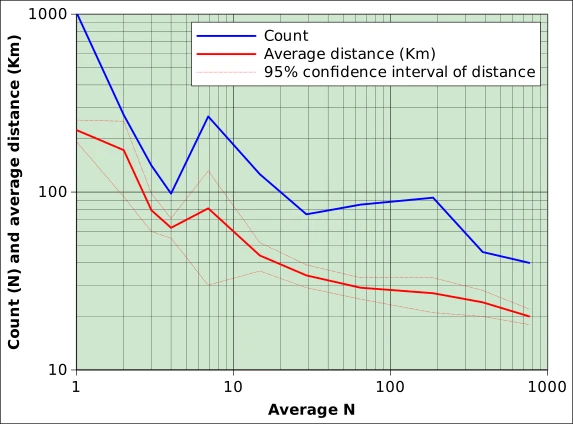
This table (which can also be represented graphically: ABSOR-F02) was prepared as follows: after computing the distance between the Centre of gravity 6 and the birthplaces of all spouses, the birthplaces where ranked according to frequency. For instance 1021 locations appear once, i.e. there is only one person in the whole database who originates in this location. The average distance of the 1021 localities to the CoG is 223 km, while the median distance reaches only 102 km: 50% of all locations are closer than 102 km, which indicates that some large distances pull the average to large values, which is also indicated by the positive skewness: many low values and few high ones. The next section (ABSOR-2.2) illustrates some frequency distribution of distances. The same procedure was followed for all the locations that contributed 2, 3 or 4 spouses.
For larger numbers, numbers of spouses were grouped. For instance, there are 266 spouses who originate from places that contributed from 5 to 10 spouses (6.9 on average). The closeness of average and median indicates that there is approximately the same number of spouses coming from places with 5, 6, 7, 8, 9 or ten spouses: places are evenly distributed over the range.
Altogether, the table indicates that the vast majority of spouses are “local”, i.e. they marry not far from their birthplace but, as will be show in chapter RELOR, rarely in the Registry office that covers their place of birth.
ABSOR-2.2 Some frequency distribution of distances
The graphs below (ABSOR-F03) illustrate essentially the positive skew of distances (i.e. the fact that “the greater the distance the fewer the people”; only one person came from Zacatecas in Mexico at 9366 km). In fact, the skewness of the distance distribution for localities that provided 5-10 spouses is 16 (refer to ABSOR-T01), while it drops to 0.31 for more than 500 spouses. This describes essentially a symmetrical distribution. The two peaks are not surprising given the small number of samples (40) but could also be due to structural differences between the northern and southern clusters. The issue was not investigated here but will be given some attention in Chapter RELOR.
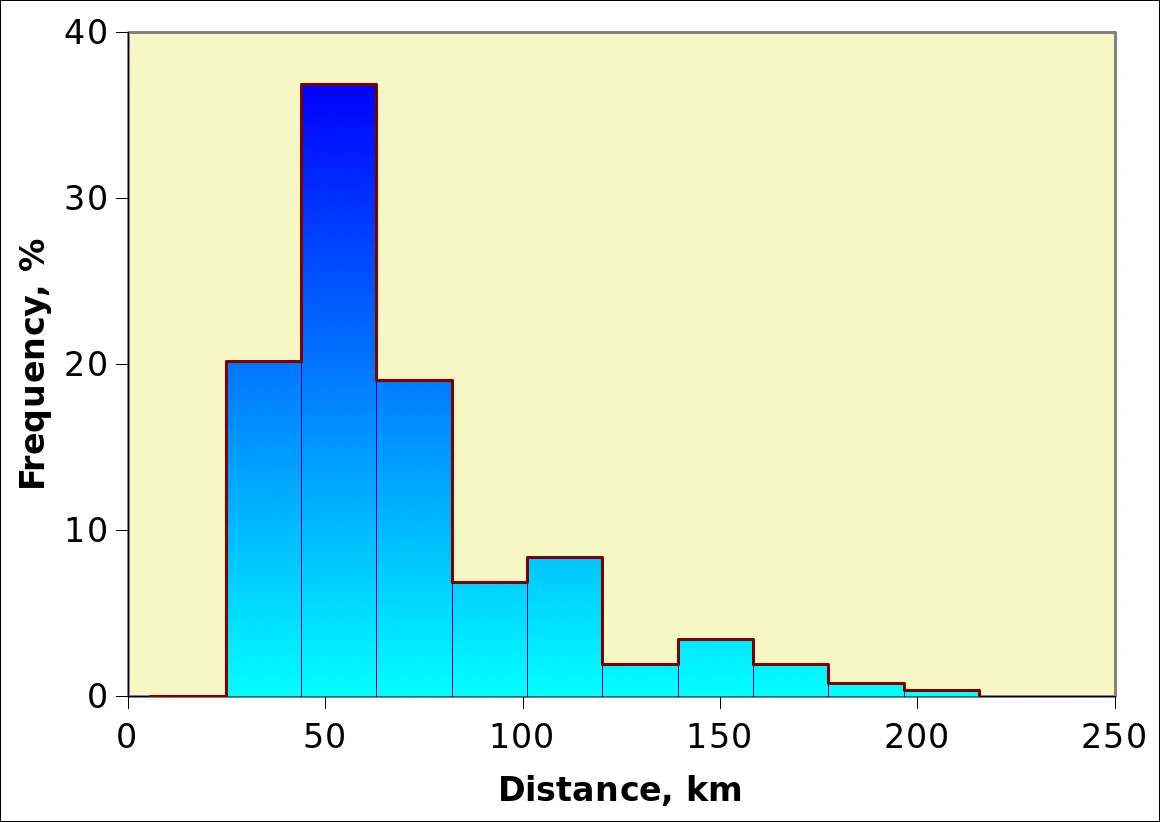 | 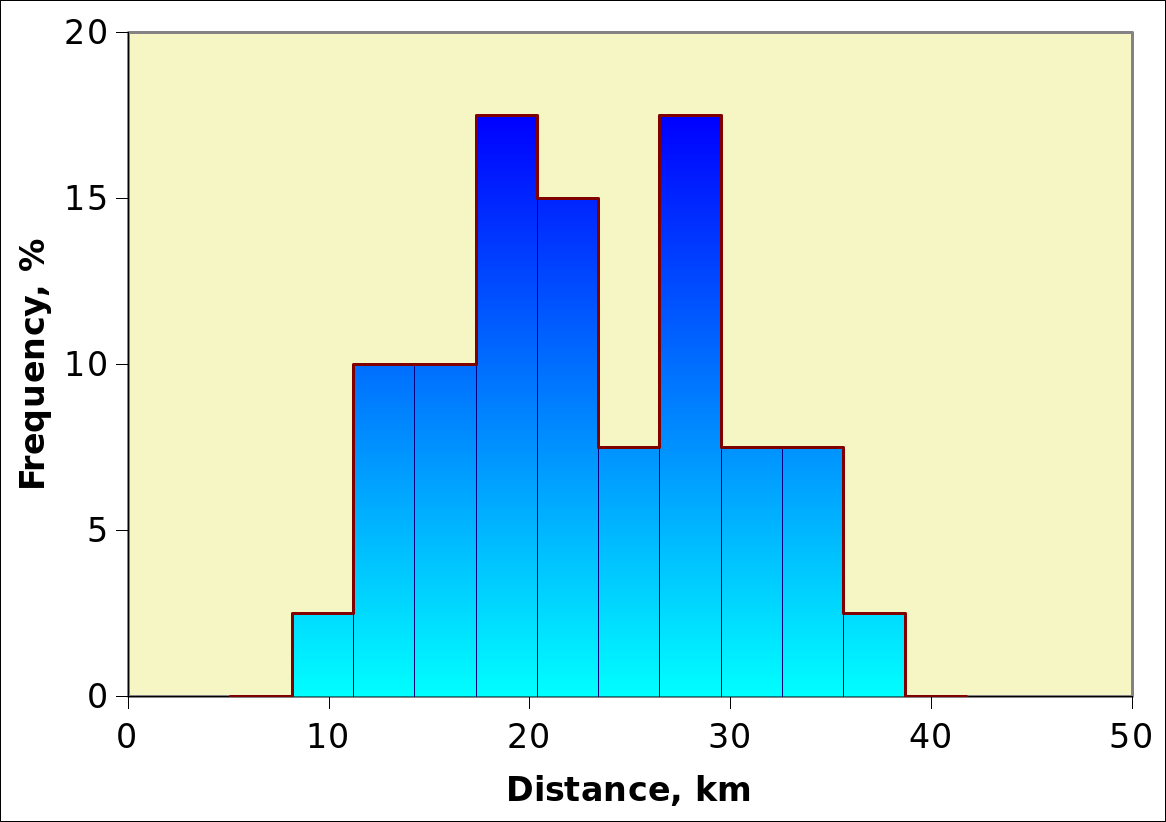 |
ABSOR-3 Geography of the spatial distribution of the origin of spouses
The places of origin of spouses can be mapped using different approaches. In the current section, we have spatially interpolated the number of spouses. The procedure creates a continuous map which tends to overestimate values in areas where there are no points7. On the other hand, the interpolations do provide a smooth field of data where observations are many. Shepard’s method was used for the interpolations8. The gridded data are downloadable from the chapter on DATA (DATA.9, which also provides some additional information on the interpolation procedure).
Figure ABSOR-F04a and ABSOR-F04b below corresponds to different “zoom” factors covering (a) the German empire and adjacent areas and (b) the Project Hull (refer to figure EXTENT-F04 in chapter EXTENT). Additional intermediate zoom factors are provided by the two following links: Rhineland and adjacent areas and the Climatic square (refer to figure VARENV–F01).
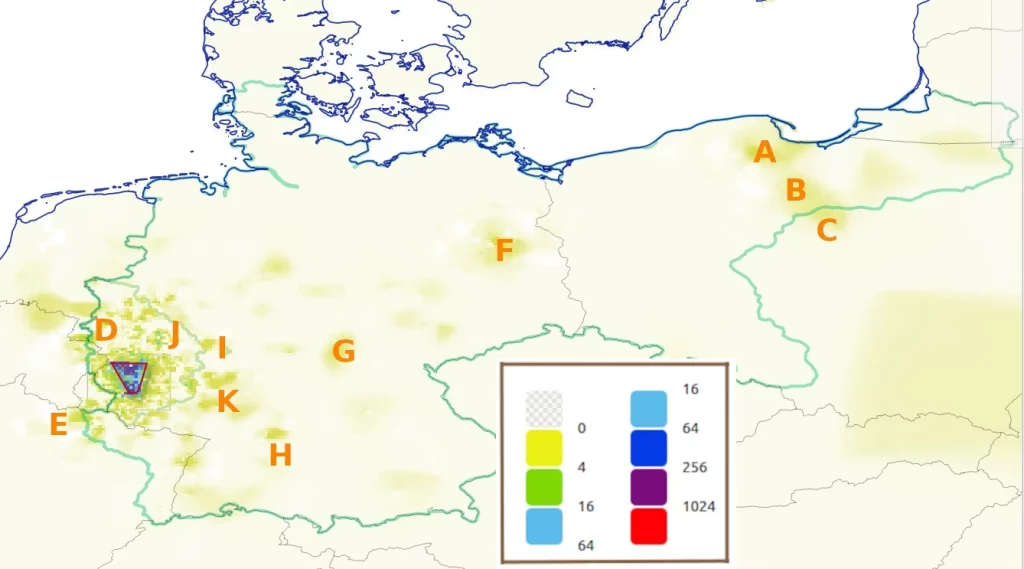
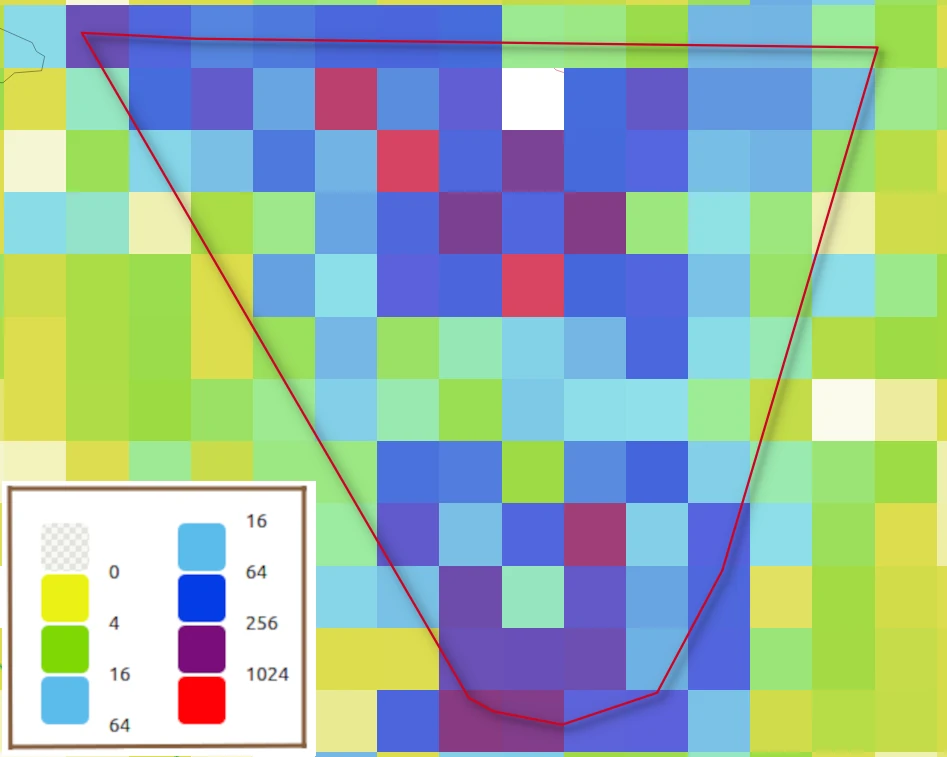
Figure ABSOR-F04a shows some areas that contibuted relatively large numbers of spouses to the Projecty area. Three are in former Prussia (Gdańsk and Grudziądz) and one is close to it (present-day Rypin county). The other are major population centres; some are close (Bonn, Aachen, Mainz, northern Lorraine) while others are at larger distances (Berlin). It is not immediately apprent what explains the relatively large number of people originating in mostly rural (but possibly expanding industrial areas) such as the area from Fulda to the Thuringian Forest and Northern Badem-Würtembeg.
ABSOR-Annex detailed geography of the origin of spouses by number
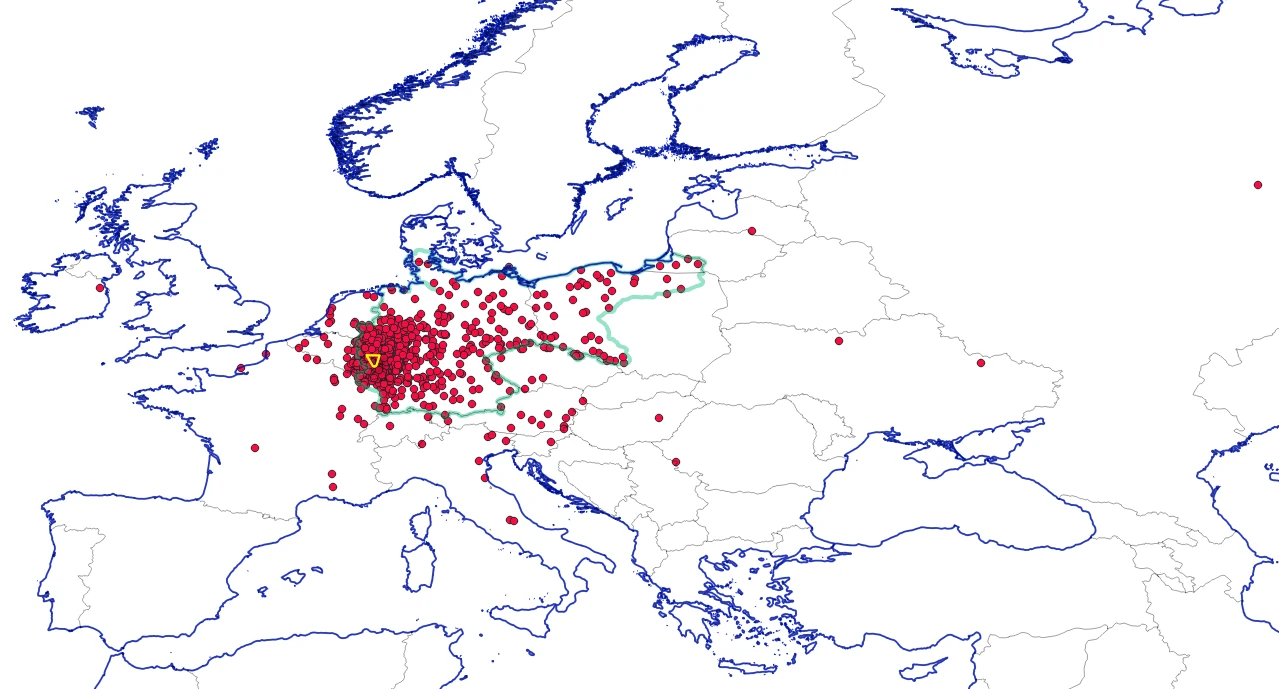 | |
| Locations which contributed 1 spouse to the Tonner database, i.e. the 1800-1935 weddings in the area of the Project hull (the yellow “triangle”). The green line is the 1871 outline of the German empire. Current national boundaries and coastlines are also indicated. | |
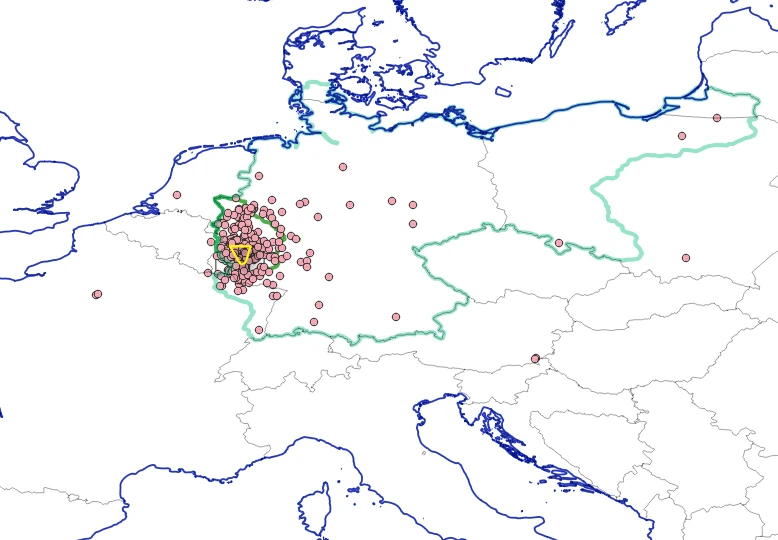 | |
| Locations which contributed 2 spouses to the Tonner database. The outline of Rhineland is also indicated. | |
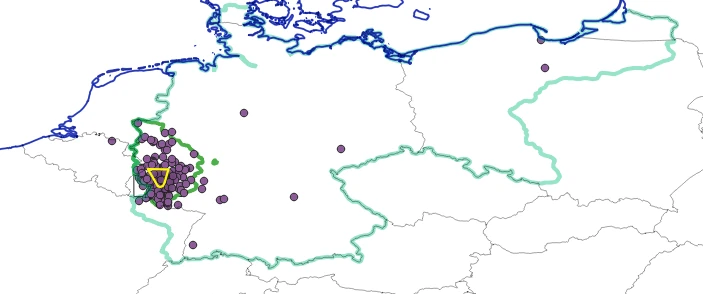 | 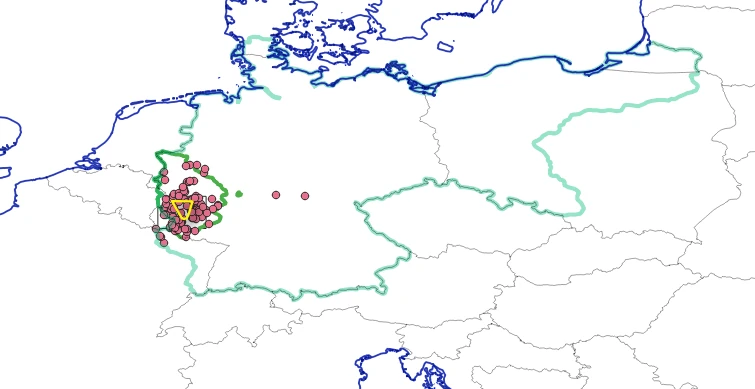 |
| Locations which contributed 3 spouses to the Tonner database. | Locations which contributed 4 spouses to the Tonner database. |
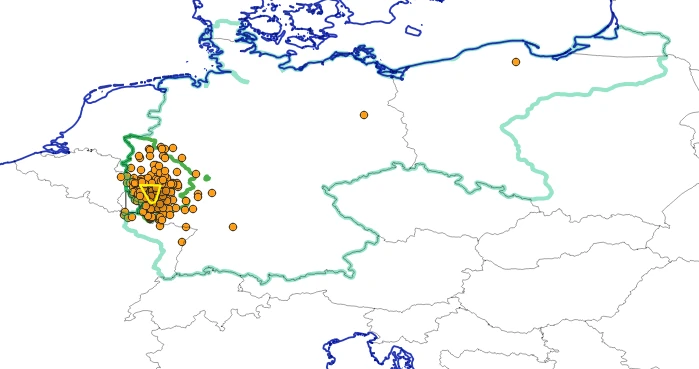 | |
| Locations which contributed between 5 and 10 spouses to the Tonner database. | |
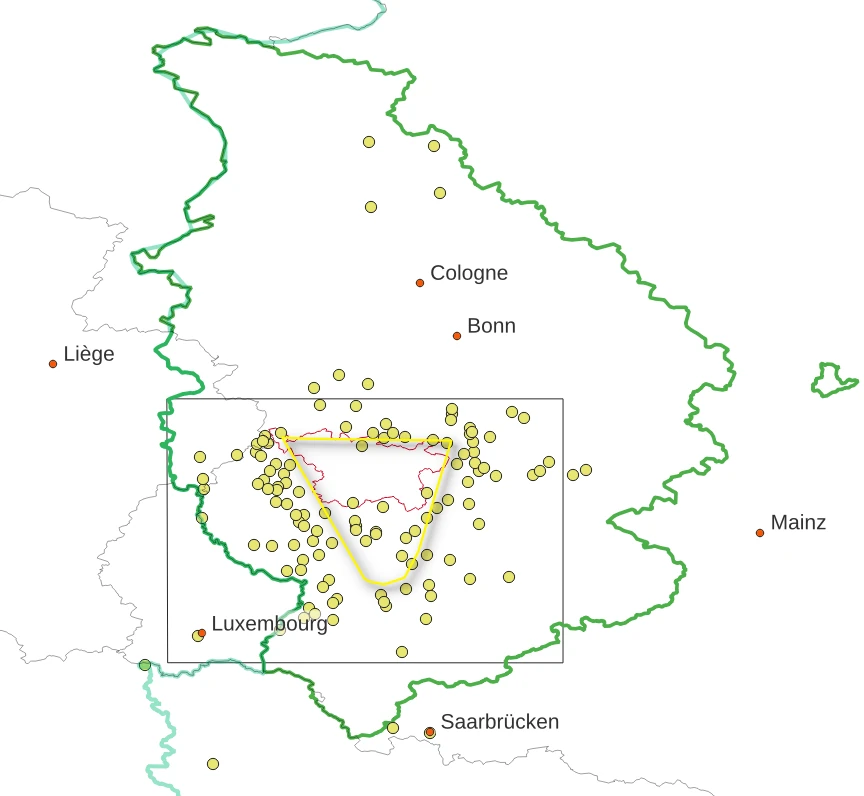 | 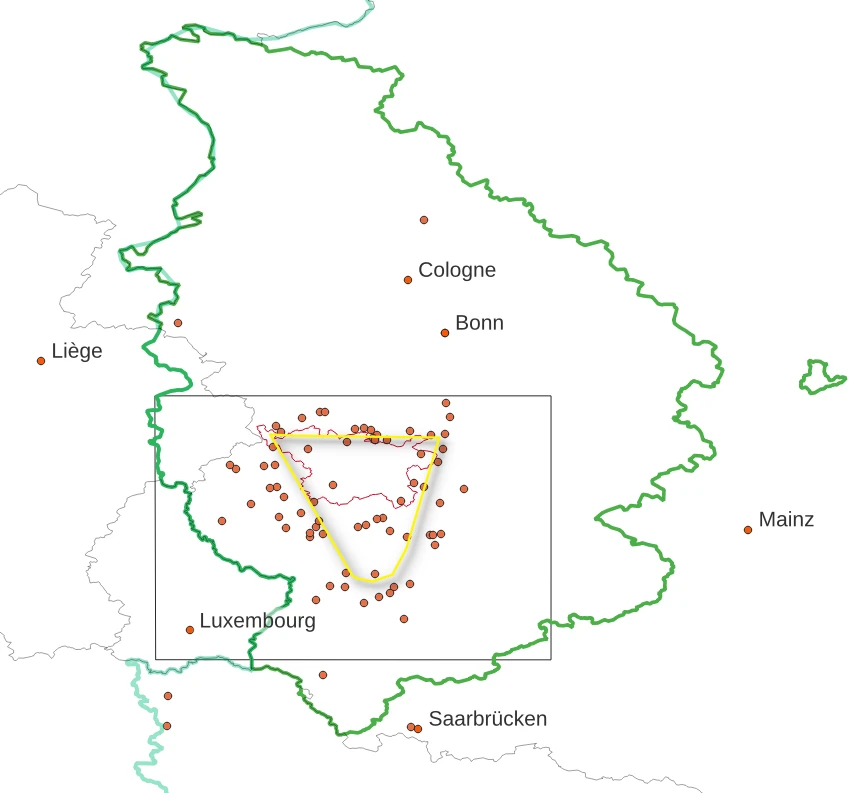 |
| Locations which contributed between 11 and 20 spouses to the Tonner database. The outer (green) boundary is the historical Province of Rhineland. In red: the Vulkaneifel district. The “rectangle” is the Climatic “square”. | Locations which contributed between 21 and 40 spouses to the Tonner database. Only Bonn is actually part of the dataset. Liège, Cologne, Mainz, Saarbrücken and Luxembourg are not. |
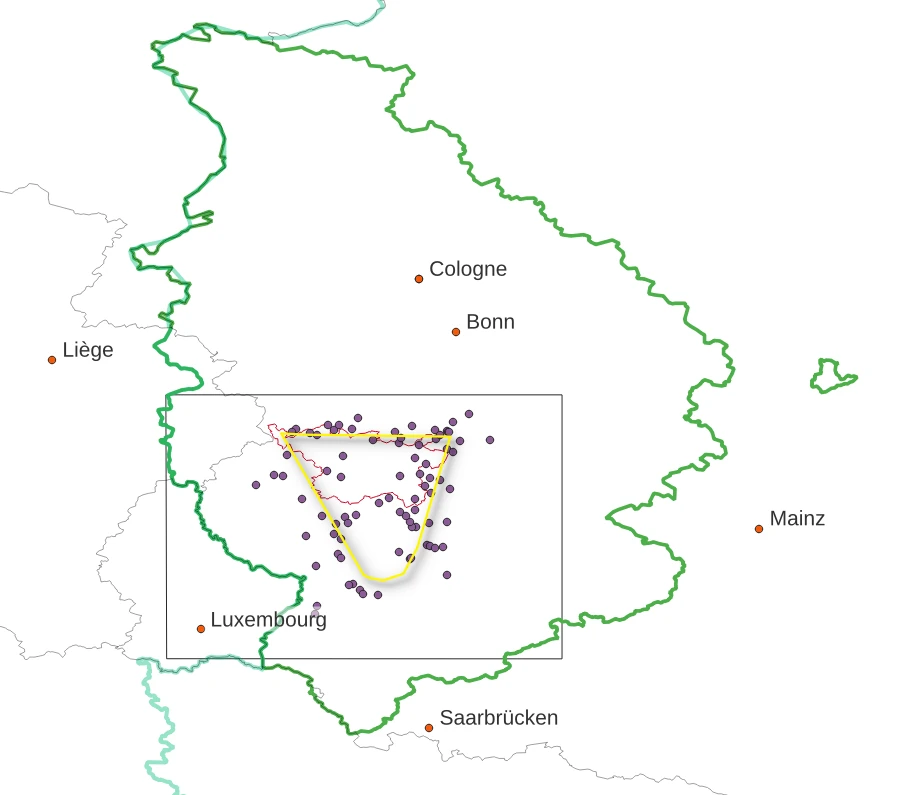 | 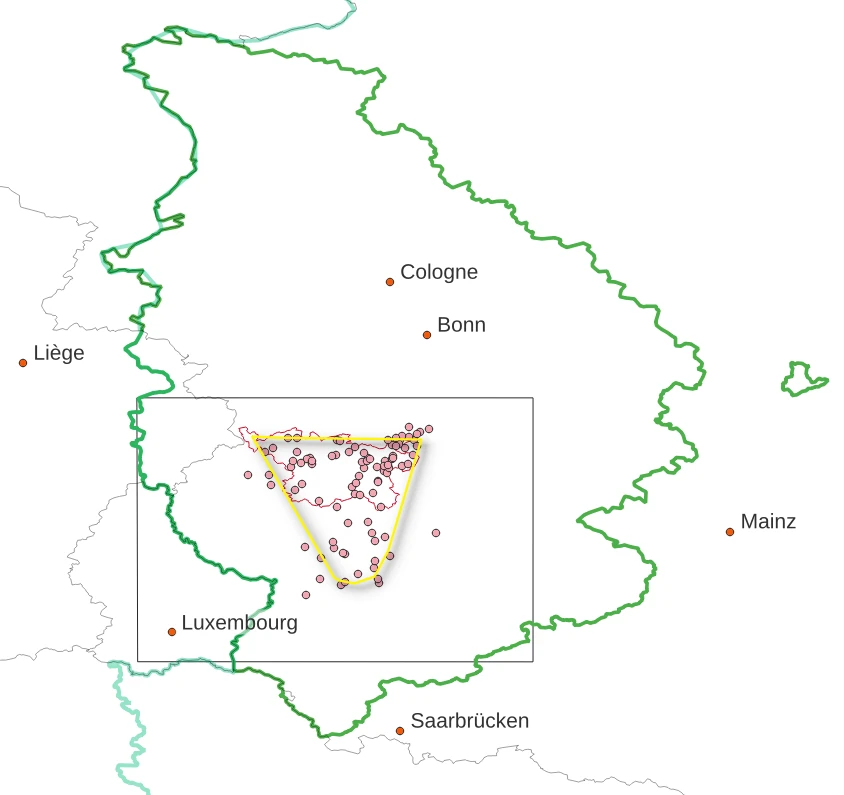 |
| Locations which contributed between 41 and 100 spouses to the Tonner database. | Locations which contributed between 101 and 300 spouses to the Tonner database. |
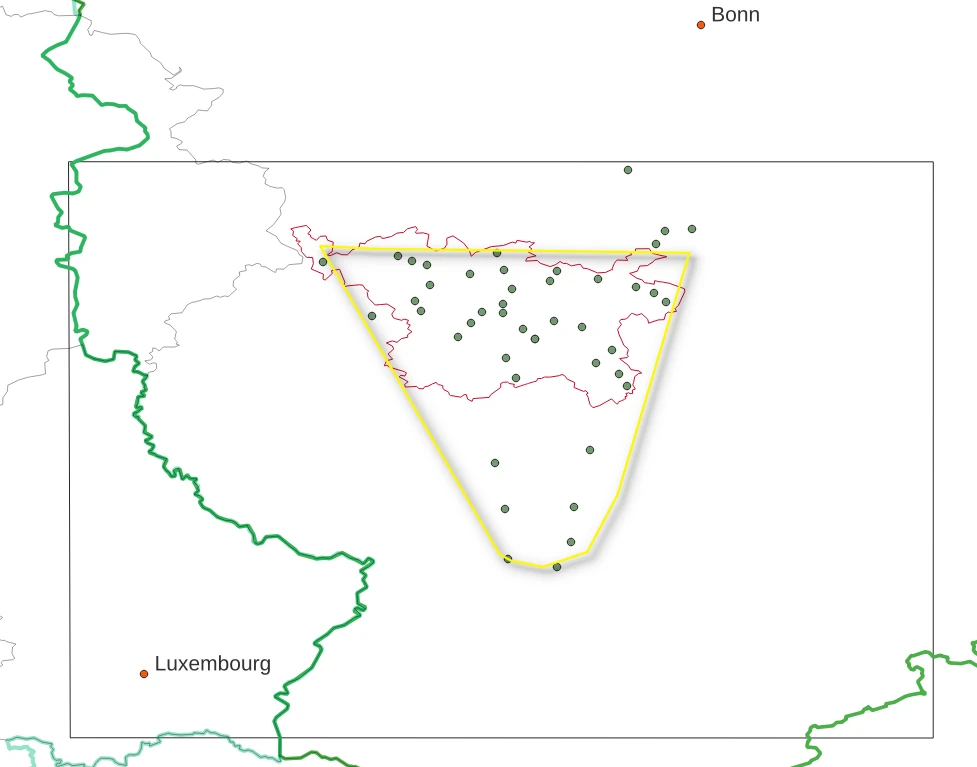 | 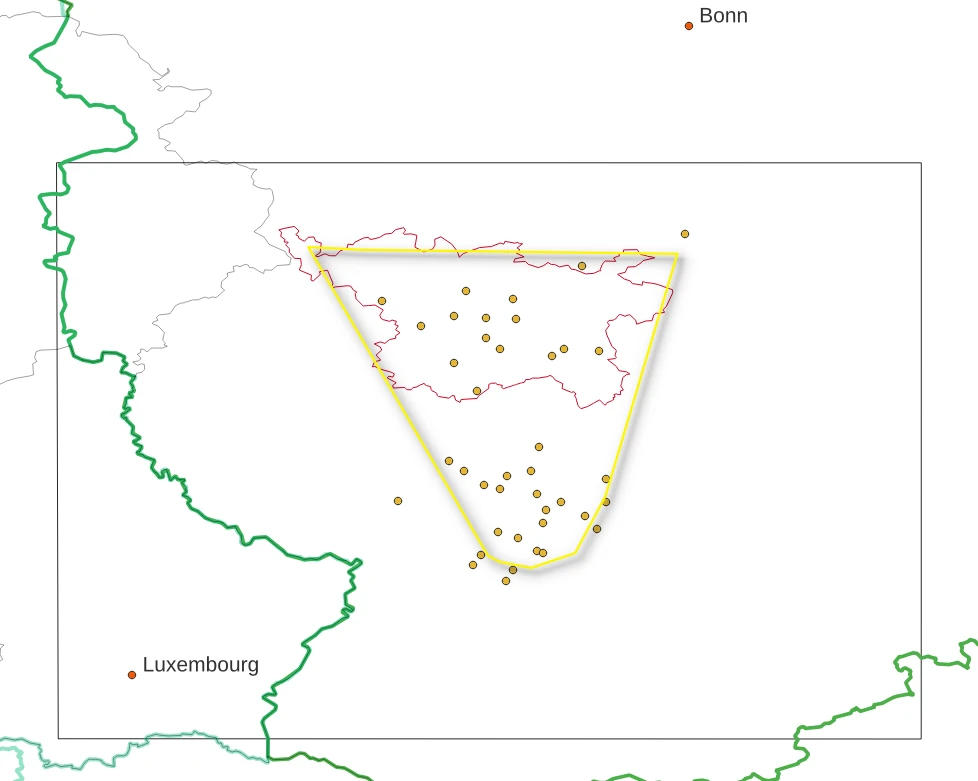 |
| Locations which contributed between 301 and 500 spouses to the Tonner database. | Locations which contributed more than 500 spouses to the Tonner database. |
- The language is actually Moselle Franconian or Luxembourgish, but it is traditionally known in the area as “German”[↩]
- “Standard German” used to be the language of primary education up to 1919[↩]
- Many thanks to Attila Bussay who helped with the identifications[↩]
- This information is not included in the available datasets.[↩]
- 40 if the localities that contributed more than 1000 are included[↩]
- CoG, 50.084911°N, 6.795851°E. This is the centre of gravity of the cooordinates of the 35 wedding registry offices of the localities inside the Project hull; refer, again, to Chapter EXTENT[↩]
- Observed locations refer to “1 or more” spouses. All otrher locations indicate “0 spouses”. All interpolation techniques will tend to fill the locatioins between 1 values with “1”.[↩]
- 2346 data points interpolated to a 0.05 degree grid covering 1 to 26 E and 42 to 58 N[↩]